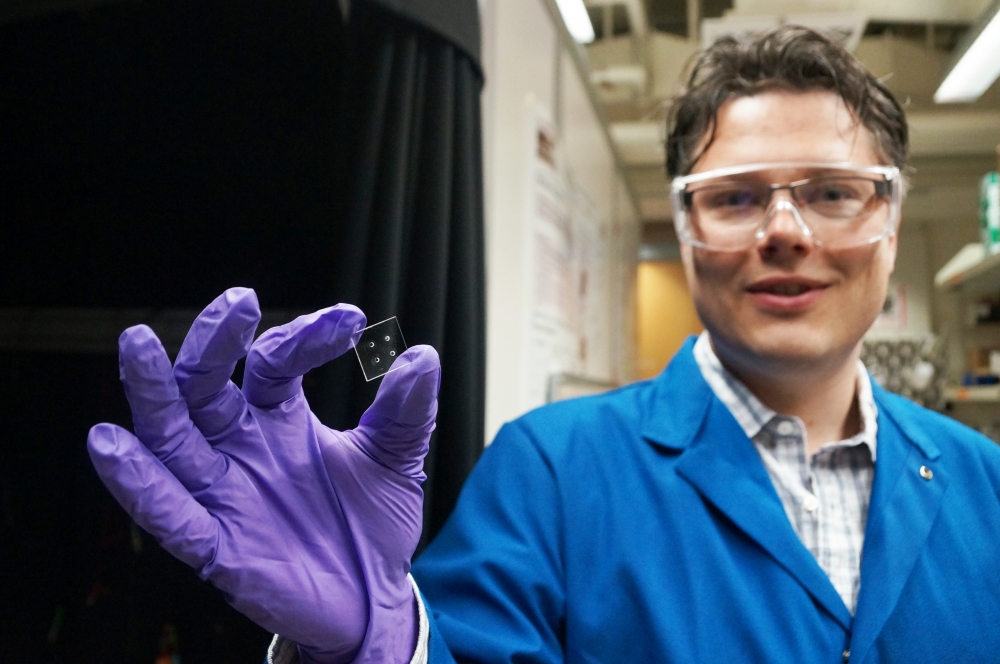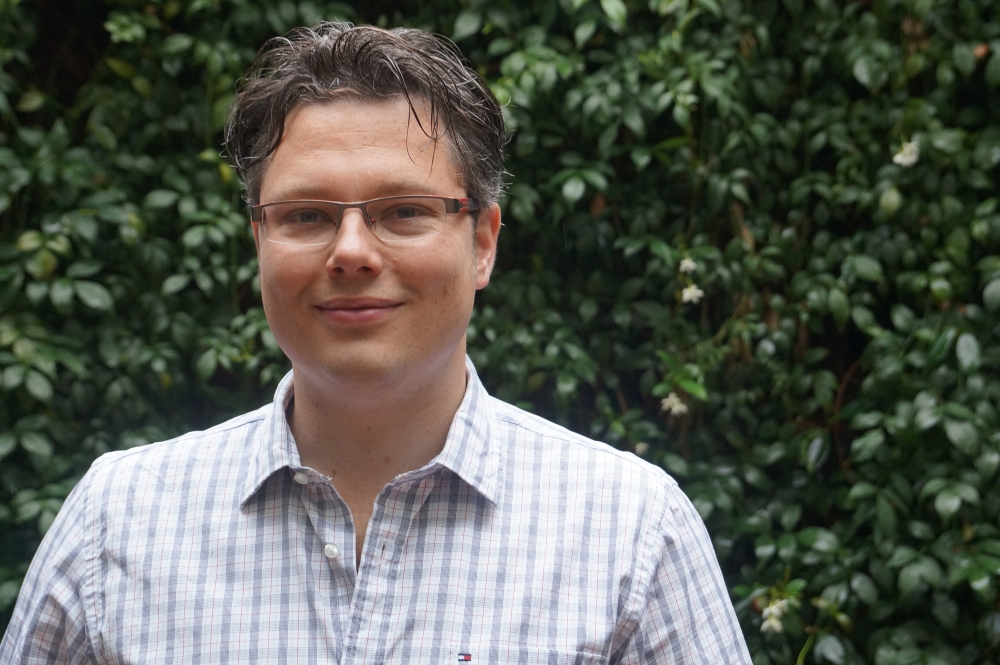
Miniature Technology, Large-Scale Impact

The postage stamp-sized square of fused silica Kjeld Janssen is holding may not look like a whole lot to the untrained eye, but inside the clear chip lies the potential to improve how medicine and medical research is done.
“If you can integrate and automate an analysis technique into a chip, it opens doors to great applications,” said Janssen, a postdoctoral researcher in the Sumita Pennathur Lab at UC Santa Barbara.
With only a minimal amount of human plasma, the Omnisense nanofluidic chip he is developing is the heart of a device that can assist in the swift and accurate diagnosis of bacterial or viral infection in less time than it would take conventional tests — and it would cost less as well.
The portability of the technology could be used to enable clinical services and quick on-site screening, particularly in remote areas where people don’t have access to a full medical lab, as well as data gathering for clinical trials or epidemiological studies.
For the impact his project will have in the field of translational medicine, the postdoctoral scholar has been awarded the 2015 Lindros Award from the UCSB Translational Medical Research Laboratory (TMRL).
“It’s very awesome,” Janssen, a recent transplant from the Netherlands, said of the award. It feels like a recognition of his effort, including late-night and after-hours work, and of his students — which is especially gratifying and motivating, he added. The $10,000 grant provided by the award will be used in direct support of the development of the Omnisense lab-on-a-chip.
“The promise and delivery of high-throughput, real-time, multiplexable detection of viruses and bacteria is one of the most sought-after technologies and methodologies in all of medicine,” said Dr. Scott Hammond, executive director of TMRL. “Working with the Pennathur Lab, Kjeld Janssen’s research is intended to bring real-time detection to the world of medicine.”
This technology, said Hammond, allows for the identification of specific DNA markers in an advanced microfluidic device. “Further, so compelling is this research that UCSF, as a part of their partnership with the TMRL, is directly collaborating on this project in order to provide human physiological samples and access to their world-leading standard of practice,” he said.
Janssen, who received his doctoral degree from Leiden University, is no stranger to the sensing of the very small. As part of his work getting his master’s degree — which he received from the University of Nijmegen in the Netherlands — he did internships in the country and in France on detecting neurotransmitter secretion from single neurons. For his postdoctoral work, he studied the downscaling of bioanalytical techniques to the nanoscale, taking what would normally require tubes or vials of plasma down to technology that would require less than a single drop. He worked more than two years in industry, developing lab-on-a-chip technology for Medimate B.V., before crossing the Atlantic to land in Pennathur’s lab.
At UCSB, Janssen’s focus is currently on developing a nucleic acid amplification test on a chip, technology that could, in real time, sense for DNA-based markers in human samples. According to him, the analysis technique to be used in the nanofluidic chip — loop-mediated isothermal amplification — is particularly well-suited for a low-cost device he has planned for this technology.
“It’s simple,” he said, explaining that the chip would need less energy and that obtaining results would require fewer steps than other methods.
The benefits in this technology could lead to its deployment of this technology in remote areas of the world and in developing countries, where the local health care infrastructure might not be able to support the level of research or medicine necessary to monitor or treat patients. Efforts to study and combat highly infectious diseases, including Hepatitis C, SARS or MERS, could also benefit from the user-friendly chip and its rapid results.
“His award is truly helping our lab become translational,” said UCSB mechanical engineering professor Sumita Pennathur. “It’s a big step forward in terms of bringing out nanofluidic technology to real biomedical applications of disease diagnosis. I'm so excited for him!”



